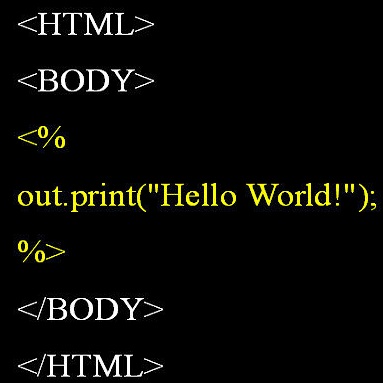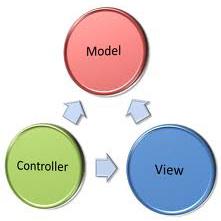ASP.NET Core 2.0 使用Autofac实现IOC依赖注入
(点击上方蓝字,可快速关注我们)
来源:Andre-Hub
cnblogs.com/Andre/p/9604759.html
初识ASP.NET Core的小伙伴一定会发现,其几乎所有的项目依赖都是通过依赖注入方式进行链式串通的。
这是因为其使用了依赖注入 (DI) 的软件设计模式,代码的设计是遵循着“高内聚、低耦合”的原则,使得各个类与类之间的关系依赖于接口,这样做的目的是能更有利于项目代码的维护与扩展。
Autofac
在进入主题之前咱们还是先来简单的认识下鼎鼎大名的“Autofac”吧。
那么何为Autofac呢,通俗的讲就是一个开源的,且基于.NET Core、ASP.NET Core、.NET 4.5.1+等框架实现的控制反转(IOC)类库。
通过Autofac可以在.NET Core、ASP.NET Core、.NET 4.5.1+等项目上很容易的实现依赖注入,代码很容易就能达到“高内聚、低耦合”的原则。
另外,Autofac的中文资料也很多,需要详细了解的也可在网上自行查看。
Autofac官方网站:https://autofac.org/
Autofac官方的中文文档网站:https://autofaccn.readthedocs.io/zh/latest/
背景
在我们大部分的项目中都会将代码抽成多层,每层之间通过相互依赖串联工作。
在这里,我们将ASP.NET Core项目代码抽成三层结构,分别为输入输出层(MVC项目)、业务层(类库)、数据层(类库),每层的功能描述如下:
1、Lezhima.Web:接受来自客户端的请求,及服务端响应的出入口。由一个基于ASP.NET Core的MVC项目组成。
2、Lezhima.Core:根据请求做出相应的业务判断,及调度上下游数据并计算,输出相应的业务结果给调用者。由一个基于.NET Core的类库组成。
3、Lezhima.Data:直接跟DB进行通讯交互,实现对DB的增、删、改、查等操作。由一个基于.NET Core的类库组成。
依赖关系:
基于上述中的三层代码结构,我们可以清晰的看出Lezhima.Web做为项目出入口,在其需要时会调用Lezhima.Core类库,并将业务交由Lezhima.Core库处理,而Lezhima.Core类库在其需要时会调用Lezhima.Data类库操作DB。那么,它们之间的依懒关系应该是这样子的:
1、Lezhima.Web同时依赖于Lezhima.Core与Lezhima.Data类库。
2、Lezhima.Core依赖于Lezhima.Data类库。
实现代码
通过上面的介绍,我们清楚了三个分层之间的功能与依赖关系,那么接下来我们就分别来看看它们具体代码及使用Autofac如何优雅的实现依赖注入吧。
1、首先在Lezhima.Web项目中通过NuGet管理器引用:Autofac、Autofac.Extensions.DependencyInjection两个类库。
2、我们先来看看Lezhima.Data层的代码,首先定义一个名为“IRepository”接口,代码如下:
using System;
using System.Collections.Generic;
using System.Data;
using System.Linq;
using System.Linq.Expressions;
using System.Text;
using System.Threading.Tasks;
namespace Lezhima.Data.Interface
{
public interface IRepository<T> where T : class
{
/// <summary>
/// 从指定的表中获取符合条件的一条实体数据
/// </summary>
/// <param name="predicate"></param>
/// <returns></returns>
Task<T> GetAsync(Expression<Func<T, bool>> predicate);
}
}
3、在Lezhima.Data层再增加一个名为“Repository”类,实现“IRepository”接口,代码如下:
using System;
using System.Collections.Generic;
using System.Linq;
using System.Text;
using System.Threading.Tasks;
using System.Data;
using System.Linq.Expressions;
using Microsoft.EntityFrameworkCore;
using System.Data.SqlClient;
using Lezhima.Data.Interface;
namespace Lezhima.Data
{
/// <summary>
/// 数据层
/// 实现IRepository接口
/// </summary>
/// <typeparam name="T"></typeparam>
public class Repository<T> : IRepository<T> where T : class
{
/// <summary>
/// 从指定的表中获取符合条件的一条实体数据
/// </summary>
/// <param name="predicate"></param>
/// <returns></returns>
public async Task<T> GetAsync(Expression<Func<T, bool>> predicate)
{
using (var db = new LezhimaContext())
{
if (predicate == null)
return null;
return await db.Set<T>().Where(predicate).FirstOrDefaultAsync<T>();
}
}
}
}
4、在Lezhima.Core层再定义一个名为“IUserCore”接口,代码如下:
using System;
using System.Collections.Generic;
using System.Text;
using System.Threading.Tasks;
namespace Lezhima.Core.Interface
{
public interface IUserCore
{
/// <summary>
/// 根据账号密码判断用户是否拥有合法登录权限
/// </summary>
/// <param name="email"></param>
/// <returns>100成功,101账号错误,102密码错误,103参数不合法</returns>
Task<MobiResult> Login(string email,string pwd);
}
}
5、在Lezhima.Core层再增加一个名为“UserCore”类,实现“IUserCore”接口,代码如下:
using Lezhima.Core.Interface;
using Lezhima.Data.Interface;
using System;
using System.Collections.Generic;
using System.Text;
using System.Threading.Tasks;
namespace Lezhima.Core
{
public class UserCore : IUserCore
{
//定义一个依赖属性
private readonly IRepository<EB_User> _Repository;
/// <summary>
/// 通过构造涵数方式注入Data层的Repository实例
/// </summary>
/// <param name="repository"></param>
public UserCore(IRepository<EB_User> repository)
{
_Repository = repository;
}
/// <summary>
/// 根据账号密码判断用户是否拥有合法登录权限
/// </summary>
/// <returns>100成功,101账号错误,102密码错误,103参数不合法</returns>
public async Task<MobiResult> Login(string email, string pwd)
{
if (string.IsNullOrEmpty(email) || string.IsNullOrEmpty(pwd))
return new MobiResult(103);
//到Data层去取指定用户的数据
var model= await _Repository.GetAsync(p => p.Email.Equals(email)&&p.IsDelete!=99);
if(model ==null)
return new MobiResult(101);
if(!model.Pwd.Equals(pwd))
return new MobiResult(102);
return new MobiResult(100);
}
}
}
6、在Lezhima.Web层增加一个名为“AccountController ”的控制器,代码如下:
using System;
using System.Collections.Generic;
using System.Linq;
using System.Security.Claims;
using System.Threading.Tasks;
using Lezhima.Core.Interface;
using Microsoft.AspNetCore.Authentication;
using Microsoft.AspNetCore.Authentication.Cookies;
using Microsoft.AspNetCore.Authorization;
using Microsoft.AspNetCore.Http;
using Microsoft.AspNetCore.Mvc;
namespace Lezhima.Web.Controllers
{
[Authorize]
[AutoValidateAntiforgeryToken]
public class AccountController : Controller
{
//定义一个依赖属性
private readonly IUserCore _UserCore;
/// <summary>
/// 通过构造涵数方式注入Core层的UserCore实例
/// </summary>
/// <param name="__UserCore"></param>
public AccountController(IUserCore __UserCore)
{
_UserCore = __UserCore;
}
// GET: Account
public ActionResult Index()
{
return View();
}
/// <summary>
/// 实现客户端的登录操作
/// </summary>
/// <param name="loginRequest"></param>
/// <returns></returns>
[HttpPost]
[AllowAnonymous]
public async Task<IActionResult> Login(LoginRequest loginRequest)
{
var result = await _UserCore.Login(loginRequest.Email, loginRequest.Pwd);
if (result.Code != 100)
{
ViewBag.ResultModel = result;
return View();
}
//向客户端写入用户的身份cookie
var _user = new ClaimsPrincipal(new ClaimsIdentity(new Claim[]
{
new Claim("UserId", user_model.UserId.ToString()),
}, CookieAuthenticationDefaults.AuthenticationScheme));
await HttpContext.SignInAsync(CookieAuthenticationDefaults.AuthenticationScheme, _user);
if (string.IsNullOrWhiteSpace(loginRequest.ReturnUrl))
{
return RedirectToAction("Index", "Home");
}
return Redirect(loginRequest.ReturnUrl);
}
}
}
7、在Lezhima.Web层增加一个名为“Evolution”的类,用于继承Autofac的Module类,实现上述三层之间的依赖关系注入,代码如下:
using Autofac;
using Lezhima.Core;
using Lezhima.Data;
using Lezhima.Data.Interface;
using System;
namespace Lezhima.Web.Injection
{
/// <summary>
/// 重写依赖注入的业务
/// </summary>
public class Evolution : Module
{
protected override void Load(ContainerBuilder builder)
{
//注入Data层的Repository类
builder.RegisterGeneric(typeof(Repository<>)).As(typeof(IRepository<>)).InstancePerDependency();
//批量注入Core层的类
builder.RegisterAssemblyTypes(typeof(EB_UserCore).Assembly)
.Where(t => t.Name.EndsWith("Core"))
.AsImplementedInterfaces();
}
}
}
8、在Lezhima.Web层的“Startup”类的“ConfigureServices”方法内注入即可,代码如下:
public IConfiguration Configuration { get; }
public IServiceProvider ConfigureServices(IServiceCollection services)
{
services.AddMvc();
//将Evolution注册到项目中来,实现依赖注入
var builder = new ContainerBuilder();
builder.RegisterModule(new Evolution());
builder.Populate(services);
var container = builder.Build();
return container.Resolve<IServiceProvider>();
}
总结
1、每层在调用时,通过在该类内声明一个接口类型的属性(变量),再通过Autofac构造涵数注入方式实现依赖注入并获取到相应的类实例。
2、通过继承Autofac的Module类,并在Load方法内重写自已项目的类关系来实现注入业务。
3、Autofac注入有多种不同的生命周期类型,分别为InstancePerLifetimeScope、SingleInstance、InstancePerDependency等,各位在项目中按需选择即可。
4、最后再通过在ASP.NET Core项目内的“Startup”类内将注入代码类注册到项目中就可正常使用了。
看完本文有收获?请转发分享给更多人
关注「DotNet」,提升.Net技能






